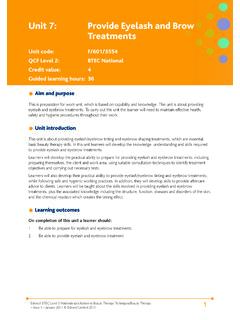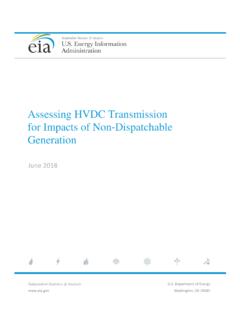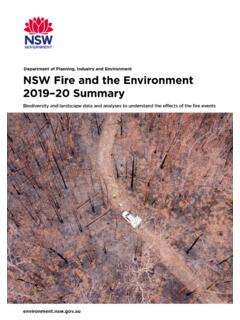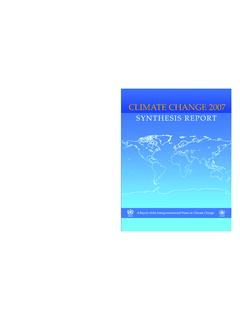Transcription of Blood Donor Selection - World Health Organization
1 BloodDonorSelectionGuidelines on AssessingDonor suitability forBlood Donation BloodDonorSelectionGuidelines on assessing Donor suitability for Blood Donation WHO Library Cataloguing-in-Publication DataBlood Donor Selection : guidelines on assessing Donor suitability for Blood donors . transfusion. practice. Health programs. Health Organization . ISBN 978 92 4 154851 9 (NLM classification: WH 460)Development of this publication was supported by Cooperative Agreement Number PS024044 from the United States Centers for Disease Control and Prevention (CDC). Its contents are solely the responsibility of the authors and do not necessarily represent the official views of CDC World Health Organization 2012 All rights reserved. Publications of the World Health Organization are available on the WHO web site ( ) or can be purchased from WHO Press, World Health Organization , 20 Avenue Appia, 1211 Geneva 27, Switzerland (tel.)
2 : +41 22 791 3264; fax: +41 22 791 4857; e-mail: Requests for permission to reproduce or translate WHO publications whether for sale or for noncommercial distribution should be addressed to WHO Press through the WHO web site ( ).The designations employed and the presentation of the material in this publication do not imply the expression of any opinion whatsoever on the part of the World Health Organization concerning the legal status of any country, territory, city or area or of its authorities, or concerning the delimitation of its frontiers or boundaries. Dotted lines on maps represent approximate border lines for which there may not yet be full mention of specific companies or of certain manufacturers products does not imply that they are endorsed or recommended by the World Health Organization in preference to others of a similar nature that are not mentioned.
3 Errors and omissions excepted, the names of proprietary products are distinguished by initial capital reasonable precautions have been taken by the World Health Organization to verify the information contained in this publication. However, the published material is being distributed without warranty of any kind, either expressed or implied. The responsibility for the interpretation and use of the material lies with the reader. In no event shall the World Health Organization be liable for damages arising from its use. ContentsExecutive summary 1 Acronyms 3 Preface 4 Policy recommendations 5 Technical recommendations 61 Introduction Blood Donor Selection Aim and objectives Target audience Methodology 17 Part 1: National system for Blood Donor selection2 Establishing a national system for Blood Donor Selection National policy and legislative framework National guidelines and criteria on Blood Donor Selection Public information and Donor education Infrastructure and facilities Financial and human resources Quality system Donor haemovigilance Monitoring and evaluation 283 assessing Donor suitability Donor Selection process Donor deferral Donor records Confidential unit exclusion Adverse Donor reactions and post-donation care 37 Part 2.
4 Criteria for Blood Donor Selection 4 General Donor assessment Age Lower age limit Upper age limit Donor appearance and inspection Minor illnesses Weight Vital signs Pulse Body temperature Blood pressure Donor iron status Haemoglobin screening Frequency of donation and iron supplementation Fluid intake and food Gender Pregnancy, lactation and menstruation Reducing the risk of transfusion-associated 47 acute lung injury Occupation and leisure activities Special considerations for Donor Selection 48 for apheresis donations5 Donor medical history I: Non-communicable diseases Haematological Anaemia, including haematinic (iron, B12, folate) 49 Haemoglobinopathies Enzymopathies and inherited red cell membrane defects Thrombocytopenia Secondary erythrocytosis Hereditary haemochromatosis Coagulation disorders, including haemophilia A and B Cardiovascular diseases Cardiovascular diseases Hypertension Venous thrombosis and thrombophlebitis Respiratory diseases Gastrointestinal diseases Metabolic and endocrine diseases Diabetes mellitus Thyroid disease Immunological diseases Renal and urinary tract diseases Central nervous system diseases Cerebrovascular disease Epilepsy Dementia and other neurodegenerative disorders Multiple sclerosis Malignant diseases Musculoskeletal disorders Skin diseases Psychiatric disorders 616 Donor medical history II.
5 Medical and surgical interventions Immunizations and vaccinations Post-exposure prophylaxis Live attenuated viral and bacterial vaccines Inactivated vaccines Medications Blood transfusion and transplantation Blood transfusion Organ, stem cell and tissue transplantation Diagnostic and surgical procedures Alternative, complementary and traditional medicine 687 TTI and Donor risk assessment Transfusion-transmissible infections Donor risk assessment Viral infections Hepatitis Human immunodeficiency virus/Acquired 74 immunodeficiency syndrome (HIV/AIDS) HTLV I and HTLV II Herpes viruses Mosquito-borne viruses Childhood illnesses: measles, rubella, mumps 78 and chickenpox Influenza Protozoal infections Malaria Chagas disease / American trypanosomiasis Babesiosis Leishmaniasis Bacterial infections Syphilis, yaws and gonorrhoea Lyme disease Brucellosis Yersinia infection Salmonella, campylobacter.
6 Streptococcus and 85 staphylococcus Tuberculosis Rickettsial infections Prion diseases Creutzfeldt-Jakob disease Variant Creutzfeldt-Jakob disease Country of residence and travel history High-risk behaviours High-risk sexual behaviours Injecting drug use Non-injected drugs and alcohol use Detention in prisons and penal institutions Cosmetic treatments and rituals 90 Glossary 91 References 93 Acknowledgements 108 Annexes 1 International and national guidelines 1142 Example of a Blood Donor questionnaire 1153 Literature search strategies and decision-making process for 119 formulation of recommendations 1 Executive summaryBlood transfusion services (BTS) have the responsibility to collect Blood only from donors who are at low risk for any infection that could be transmitted through transfusion and who are unlikely to jeopardize their own Health by Blood donation.
7 A rigorous process to assess the suitability of prospective donors is therefore essential to protect the safety and sufficiency of the Blood supply, and safeguard the Health of recipients of transfusion and Blood donors themselves, while ensuring that suitable donors are not deferred unnecessarily. These World Health Organization (WHO) guidelines, Blood Donor Selection : guidelines on assessing Donor suitability for Blood donation have been developed to assist Blood transfusion services in countries that are establishing or strengthening national systems for the Selection of Blood donors1. They are designed for use by policy makers in national Blood programmes in ministries of Health , national advisory bodies such as national Blood commissions or councils, and Blood transfusion services. WHO guidance on criteria for the Selection of Blood donors was first published in the distance learning materials, Safe Blood and Blood Products, Module 1: Safe Blood Donation (1) in 1994.
8 These earlier recommendations were developed on the basis of international best practice but did not have a clear evidence base. In 2009, the WHO Blood Transfusion Safety programme (WHO/BTS) convened a guideline development group (GDG) to prepare evidence-based recommendations on criteria for assessing the suitability of Blood donors . The GDG also recognized the need to provide guidance on establishing national systems for Blood Donor Selection . Details of the members of the GDG and their areas of expertise are provided in the also established an external review group (ERG) to review and comment on the draft guidelines at various stages of the developmental process. The ERG comprised members of the WHO Expert Advisory Panel on Blood Transfusion Medicine and experts from WHO Collaborating Centres in Transfusion Medicine as well as directors of national Blood transfusion services and Blood programme managers from each WHO region (see Acknowledgements).
9 The role of the ERG was to review the draft guidelines and advise WHO on the relevance, applicability and feasibility of the recommendations. An advanced draft was reviewed by participants and facilitators during an inter-regional workshop on Blood Donor Selection and Donor counselling for priority countries in the African and Eastern Mediterranean regions, June 2011, Nairobi, guidelines are presented in two parts. Part 1 (Sections 2 and 3) addresses the requirements for an effective national system for Blood Donor Selection ; policy recommendations are provided on p. 5. Part 2 provides guidance on specific criteria for Blood Donor Selection in relation to general Donor assessment, Donor 1 The term Blood donors includes donors of whole Blood , red cells, platelets, plasma and other Blood components, donated as whole Blood and/or through history and risk assessment for transfusion-transmissible infections (TTI); technical recommendations on Donor Selection criteria are summarized on pp.
10 6 15 and elaborated in Sections 4 to Donor Selection : guidelines on assessing Donor suitability for Blood donation was developed in accordance with the WHO guidelines development process, which requires systematic review of new evidence for key questions and recommendations, as well as a consideration of programme feasibility and the cost implications of potential new recommendations. A systematic review of the published and grey literature was conducted covering the period 1995 2011, and also in 2012 for selected topics. Particular efforts were made to identify systematic literature reviews and evidence related specifically to Blood Donor Selection in low- and middle-income countries. Detailed literature search strategies and the decision-making process for the formulation of recommendations are available in Annex 3. High quality evidence on which to base decisions on the suitability of prospective donors for Blood donation is, however, limited or even lacking in relation to many medical conditions and risk behaviours.


















